1990s Fashion – Clothing styles & History
1990s fashion and the 1990s in Britain were a time when cheerful inanity vied against earnest environmental messages. “Cool Britannia” apparently ruled and the terms Brit-art and Brit-pop were coined as cheeky chappies Damon Albarn and Damien Hirst attended parties at Downing Street with charismatic prime minister Tony Blair and pop stars The Spice Girls met the Dalai Lama and gave Prince Charles a kiss on the cheek.
1990s Fashion trends
The Ladette was 90s feminism – we could be just as messy as the boys, and fight and swear and drink as much. And talking of messy, Grunge popped up in the US to show us that wearing vintage clothing any-old-how was the way forward, and gender equality could also be achieved by men wearing pretty dresses and smudged eyeliner with their jeans just like women did. Hedonistic and illegal rave culture also had its own codes in 1990s fashion.
On the flip side, we all worried about nuclear disasters (Chernobyl was only a few years ago), the hole in the ozone layer and saving the whales.
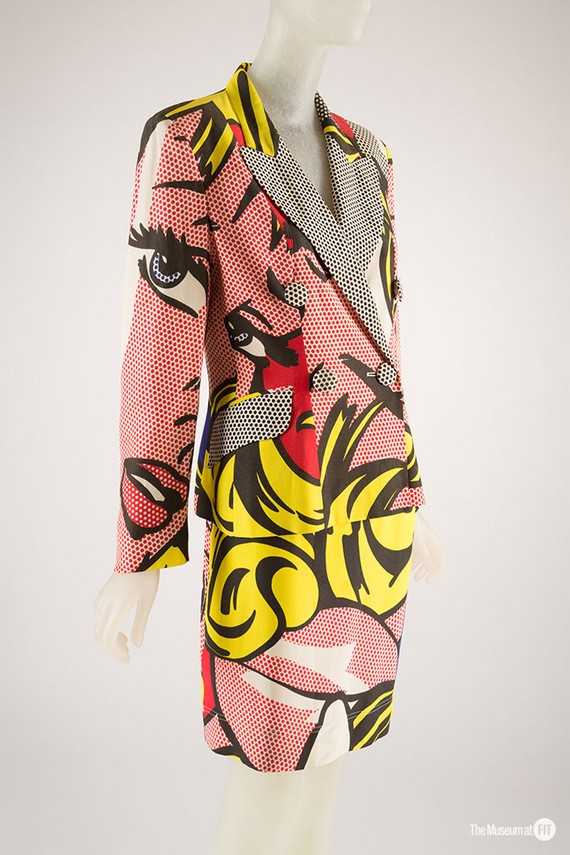
Moschino Cheap and Chic, suit with Roy Lichtenstein print, 1991
90s fashion women
On the international 90s fashion stage, minimal designers like Calvin Klein, Jil Sander, Prada and Donna Karan gave us stripped down outfits and slip dresses, and the Belgian designers dubbed the Antwerp Six promoted a doomy sort of cerebral design.
Tom Ford provided sexy and sleek gowns. John Galliano and Alexander McQueen proved that British designers could do perfectly executed and very creative glamour, even as they partied their heads off with The Primrose Hill set, a posh and beautiful group of actors, models and assorted rich people whose coke-snorting exploits the press just could not get enough of.
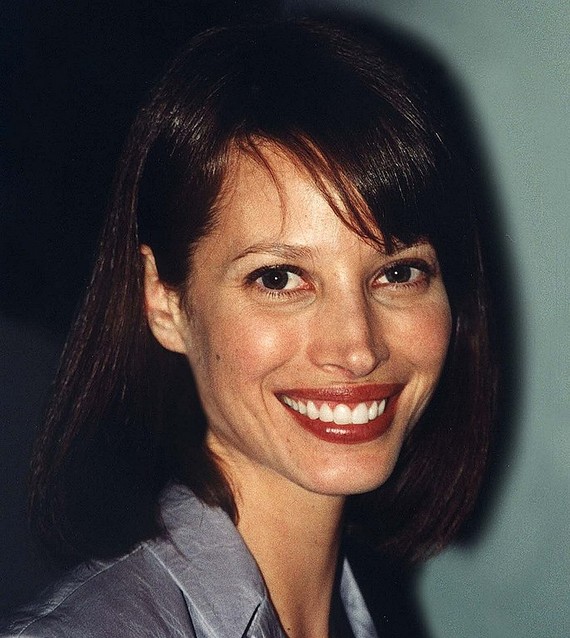
Christie Turlington
90s Supermodels
There was a new breed of model in town, the supermodels, and “We don’t wake up for less than $10,000 a day”, as Linda Evangelista said in 1990. That statement provoked outrage but it was probably true – Linda, and her fellow models dubbed “The Big Six” (Christy Turlington, Naomi Campbell, Tatjana Patiz, Claudia Schiffer and Cindy Crawford) were EVERYWHERE in the 1990s, not only on the catwalks and magazine covers but in the gossip columns too. Christy Turlington, as the face of Maybelline, earned $800,000 for 12 days’ work a year. 1995 saw Claudia Schiffer earn a reported $12 million.
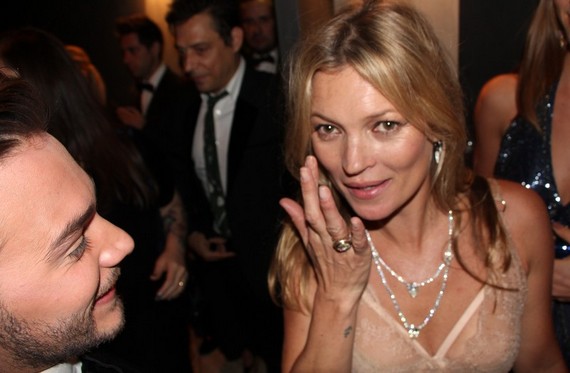
Kate Moss
Heroin chic
Those supermodels were tall, classically beautiful women, but another type of beauty standard was in town too: heroin chic. Initially it was epitomised by Kate Moss – only 5’7” and not a six-foot Glamazon, with skinny, bandy legs, flat-chested and very young – she was 14 when she was “discovered” and 16 when she shot to fame, photographed wearing a grubby vest and knickers and no makeup in a grungy flat by Corinne Day for the Face magazine.
This kick-started a trend for models so thin they looked ill, or like drug addicts – hence the heroin chic label. The crumpled, unstructured clothes in haphazard layers that Moss and fellow skinny models were put in heightened this general effect.
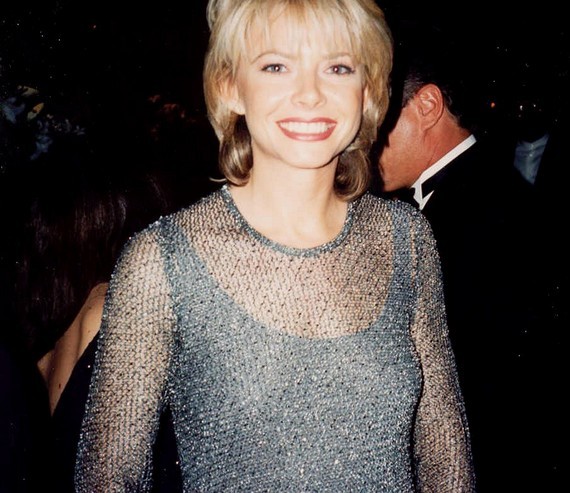
Faith Ford at the Emmy Awards, 1994.Photo by Alan Light.
1990s Fashion Daywear and Evening wear
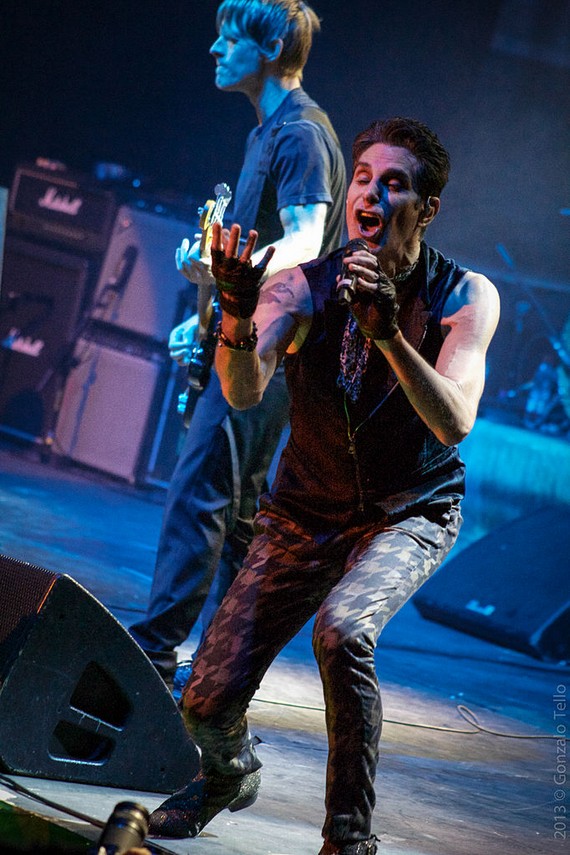
Jane’s Addiction
90s Grunge
Over in the US, a recession was going on and so people began rummaging in second hand clothes stores for outfits. There was a huge music scene in Seattle, where people just picked up guitars and started to strum, and hey, apparently people in Seattle like to stay warm, though not by any means immaculate. So their thrift shop finds mainly seemed to consist of plaid flannel shirts worn over t shirts from any decade, with a cardigan on top. Just jeans and boots did fine on the bottom half.
The style was good for both male and female, and when those Seattle bands (Nirvana, Jane’s Addiction, Red Hot Chilli Peppers) made it big in the UK, the nation’s teenagers wore the same.
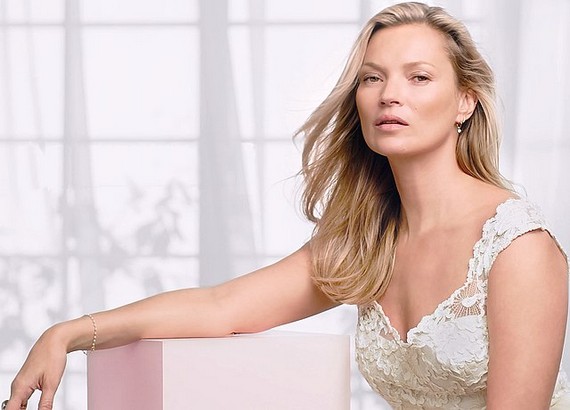
Kate Moss – Decorté advertisement
Prom dresses, petticoats and slips in 1990s Fashion
A variation on unisex look was to riffle though and find old prom dresses or even old petticoats and slips and wear them. But please, don’t iron or repair them first, and make sure they are worn with discordant big boots, and don’t spend time on your makeup – smear it on and sprinkle glitter over the top.
The world was shocked when Marc Jacobs, the designer for preppy all American brand Perry Ellis, took grunge style and tried to make it high fashion. He had cheap cotton flannel shirts recreated in Italian silk, he had holy knitwear especially made. It was not a success and he lost his job.
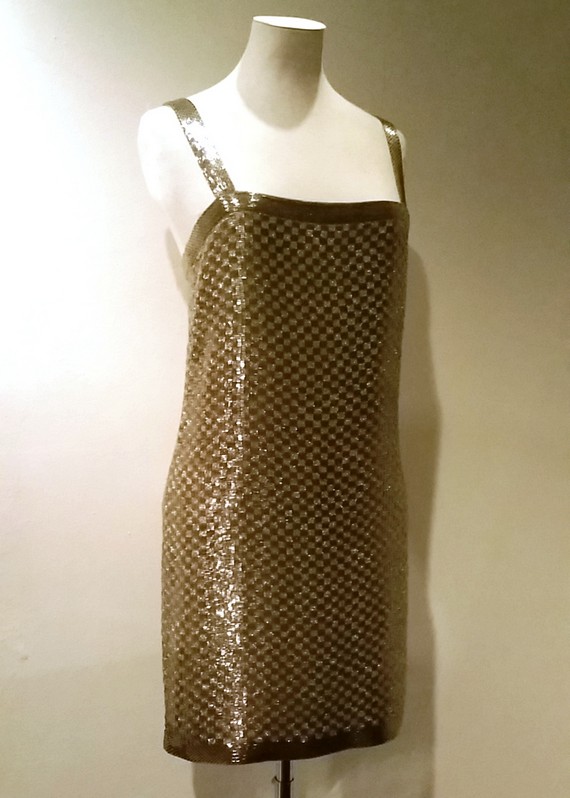
Slip dress design as minidress, Calvin Klein , 1991
The slip dress
Calvin Klein did rather better when he simply adopted the slip dress part of the grunge dress code. The Calvin Klein brand had, up till now, been riotously sexy, but with the AIDS epidemic, sexiness was suspect. Klein needed a new direction and he cleverly chose androgyny and waif like Kate Moss, who represented his brand throughout the nineties.
The slip dress, though it looked like underwear, was subversively understated in 1990s fashion and many brands also took up the look. When Princess Diana wished to reinvent herself as a fashion icon in 1996 John Galliano at Dior made a slip dress for her in navy and black. It caused a furore. Slip dresses were worn as both day and evening wear, layered over jeans or on their own.
The slip dress sort of straddled maximal grunge and minimal futurism in 1990s fashion, depending on how it was worn. Minimalism was the clean, uncluttered lines of designers like Donna Karan and Prada. Like the 60s futurists, they looked at silver and white colours, and futuristic fabrics. Prada designer Miuccia Prada made nylon the most wanted material, with simple nylon shopper bags, jackets and dresses in black with the distinctive small red label shunning ornamentation. But Miuccia Prada had her decorative side and launched Miu Miu too, with its quirky, little girl dresses and cute silver shoes.

Givency evening suit, 1990
Earth colours
For grown ups who didn’t want to be little girls or space aliens, tonal layers of earth colours was the answer, in comfortable but low key luxury fabrics like cashmere. These natural colours were also used by environmentalists keen to create collections without harsh chemical dyes and using lower impact fabrics, like hemp and linen.
1990s Bridal
Bridal wear often follows trends in evening wear, with versions of the same dresses but in white. 1990s fashion was no exception and some of the most fashionable weddings were in little white slip dresses. For added romance, some, like Cindy Crawford, had lace covered versions; others like Stella Tennant, who was a staunch supporter of Helmut Lang, had a minimalist version, but with layers of tulle as a concession to the bridal theme.
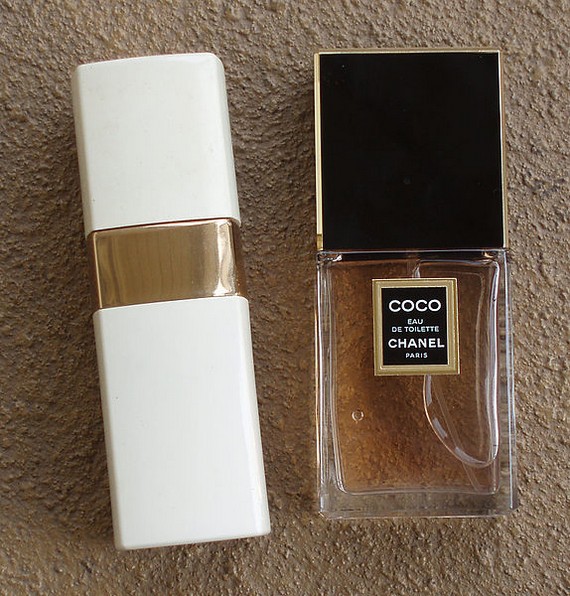
Coco de Chanel
1990s Perfume
Really clean, unisex perfumes came to be popular in the 1990s, as designers like Calvin Klein made youthful perfumes that could be worn by everyone, like CK One and CK Be. He also made the very popular and more feminine Escape and Obsession. But as well as this there were still heavy, sexy orientals, like Guerlain’s Samsara, Yves Saint Laurent’s Opium, and Coco by Chanel. Christian Dior’s Poison was still popular from the 80s, too. More “pretty” scents included Estee Lauder’s Pleasure and Beautiful.
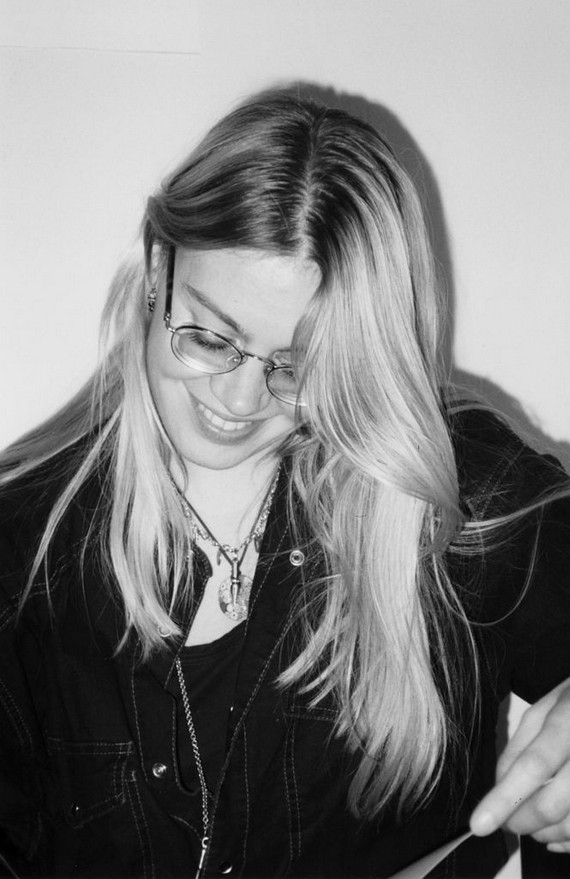
Kati Kovács, 1995
1990s Makeup
Fashion in the 90s took bright 1980s makeup and softened it into pretty washes of colour on lids and cheeks, perhaps a pastel blue eyeshadow and pale pink blusher with pink lipgloss. A strong red lip with minimal eye makeup was a powerful alternative.
But what the decade is more remembered for is a “No makeup makeup look” – with all your flaws and imperfections smoothed out and features subtly highlighted with, say, a dash of tinted moisturiser and a slick of clear mascara. The aim was to look naturally glowing, with no obvious colour. Alternatively, you could just literally wear no makeup.
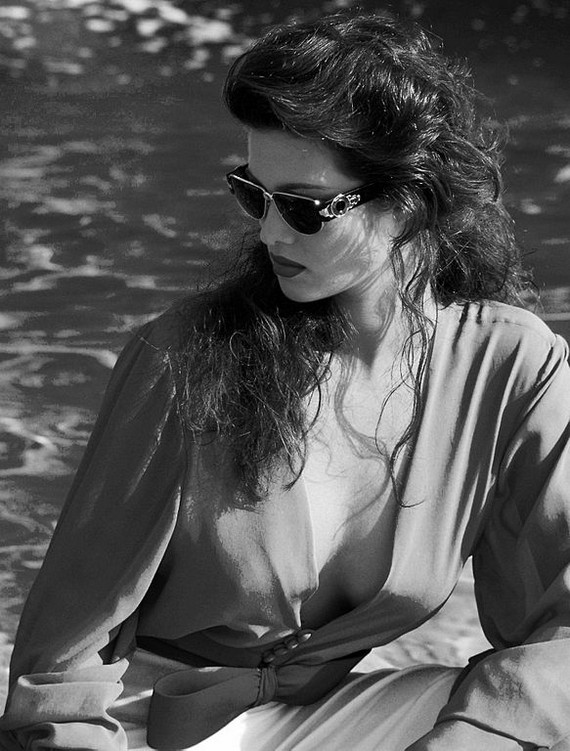
Manuela Arcuri – Marie Claire photoshoot, 1996
Hair in 1990s fashion
Long, loose hair was the most popular women’s style, though for practicality or a sporty vibe it was scraped back into a ponytail.Mostly it was left artfully product free and a little fluffy, although mousses and gels were available to tame the flyaways. A romantic, curly look was celebrated, either long, full and free or gently gathered so that tendrils fell around the face.
The classic long bob looked neat, though some supermodels (and Uma Thurman in Pulp Fiction) went for a short, sharp, classic bob.
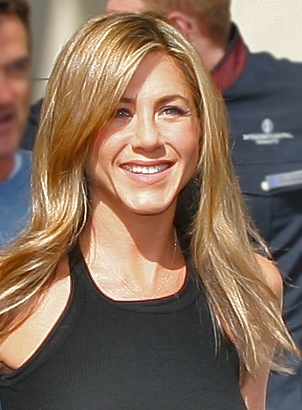
Jennifer Aniston
The Rachel
The most requested hairstyle of the 1990s was said to be The Rachel. The TV series “Friends” debuted in 1994, and Jennifer Anniston’s character, Rachel Green, had the haircut people wanted – bouncy, layered, shoulder length, obviously styled to within an inch of its life yet at the same time artfully tousled.
For all the long hair styles that proliferated in 1990s fashion, short, choppy hairstyles looked cute too. Skin, the singer from Skunk Anansie was majestically beautiful with her bald head, and if you wanted to look alternative, you could go for the undercut – a conventional longish length on top but shaved short at the back up to the top of the ears, usually worn pulled back in a ponytail to show the two lengths.
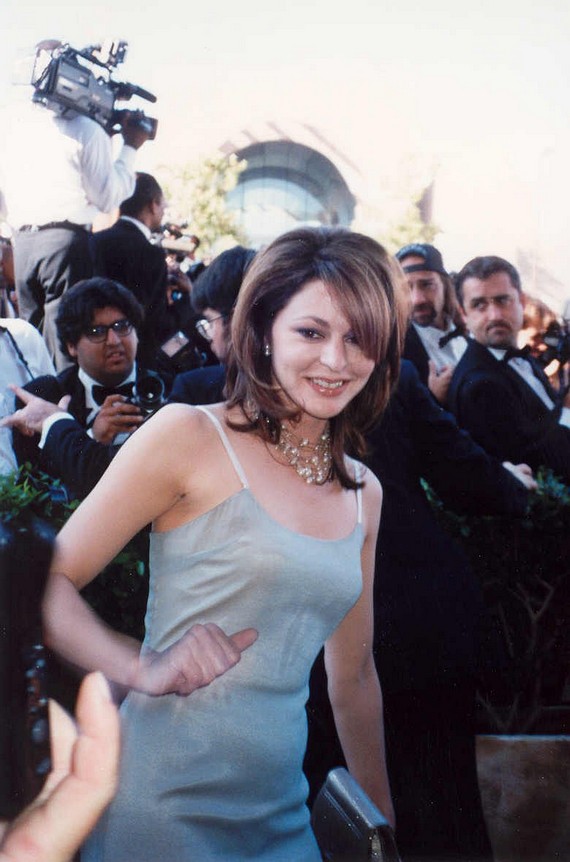
Jane Leeves, 1995
1990s Underwear
As with everything in 1990s fashion, you could go in two opposite directions for underwear fashion in the 1990s. One was to go for cotton jersey triangle bras, or no bra and just a little vest with spaghetti straps. No lace decoration or little bows, just plain jersey. Knickers were the same, plain jersey in block colours of black, white or ecru, and the only decoration perhaps a wide elastic waistband with the name of the brand you were wearing – Calvin Klein for preference.
Knickers were cut quite high in the leg and slightly high waisted to make legs look longer and make sure that elastic showed beneath baggy, low trousers or as triangle briefs with string sides.
Alternatively, you could try the Wonderbra. Padded, uplifting and determinedly sexy, the brand proved a sensation when Eva Hertzigova starred in it’s “Hello Boys” campaign.
1990s Fashion Accessories
Hats weren’t really a thing in the 90s, unless you count the ubiquitous cap and the bucket hats worn by ravers. And pop star JK from the band Jameroquai’s trademark crazy headwear. Stephen Jones made some lovely creations to go with John Galliano’s catwalk shows, but grungy girls and ravers alike preferred cutesy, ironic hair accessories, little girl clips and elastic bands to actual hats.
Footwear
For footwear in 1990s fashion, anyone of an alternative bent wore Dr Martens boots with their floaty dresses, or even huge, clompy army surplus boots on the end of bruised bare legs or black tights. Blocky loafers were another option – Patrick Cox’s “Wannabe” loafers with a block heel in a multitude of colours and finishes including mock croc were the designer desirable. Child-like jelly shoes were also sought after and Cox made a version of these too, with plastic figurines embedded in the heel.
Trainers never loosed their hold and were as collectible as ever, with classic Stan Smiths and new Jordan Air Nike high tops utilising technology for a bouncy sole.
For an elegant look, kitten heels were both practical and coquettish. They had pointed toes and sometimes a slingback, and jewelled or velvet finishes. Sometimes an all black outfit would be accessorised with a quirky leopard print or hot pink fuchsia velvet kitten heel.
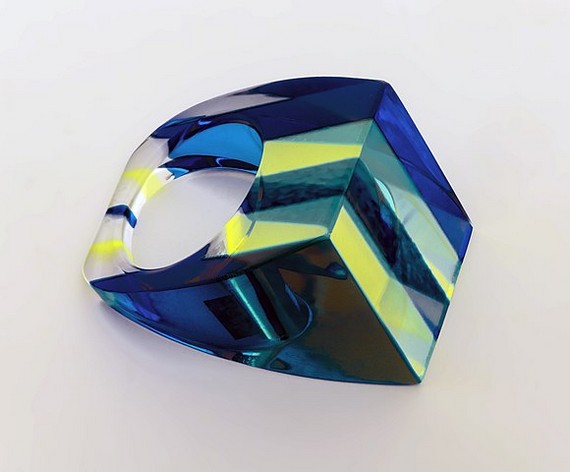
Perspex ring, transparant with stripes
1990s jewellery
Because 1990s fashion outfits were so over the top , and often in silver, glitter or metallics, or worn with beaded belts or jewelled shoes, jewellery wasn’t much worn in 1990s fashion.
The exception was probably the velvet choker, worn with or without a little pendant, and for those who were baring their bellies, a new trend of not only nose but belly button piercing shocked and surprised many who had never considered piercing anything but their ears.
Child-like (prefereably actual children’s) plastic rings, beads and bracelts, maybe with glitter embedded in were layered for the grunge look, along with deliberately tacky cheap tiaras and hair accessories.
For the minimalists, space age silver chokers and cuff bracelets by designers like Elsa Peretti were worn to accessorise an outfit along with clear perspex.
Pearl necklaces and bracelets never went away for the more traditional.
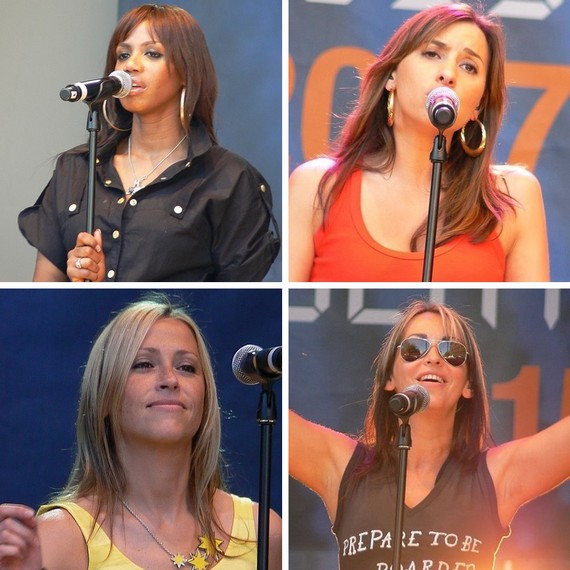
All Saints
1990s Fashion-Sportswear
Pop stars All Saints were revered by teenage girls for their cool uniform of very baggy camo trousers teemed with a sports crop top bra, showing stretches of stomach in between. They teamed this with baggy tracksuit jackets, matching trainers and caps. “Sporty Spice” – real name Melanie Chisholm – kept to a similar look, with tracksuit bottoms instead of camo trousers.
Ralph Lauren’s Polo line, Tommy Hilfiger and Calvin Klein provided the “Designer” version of sportswear in particularly desirable names.


